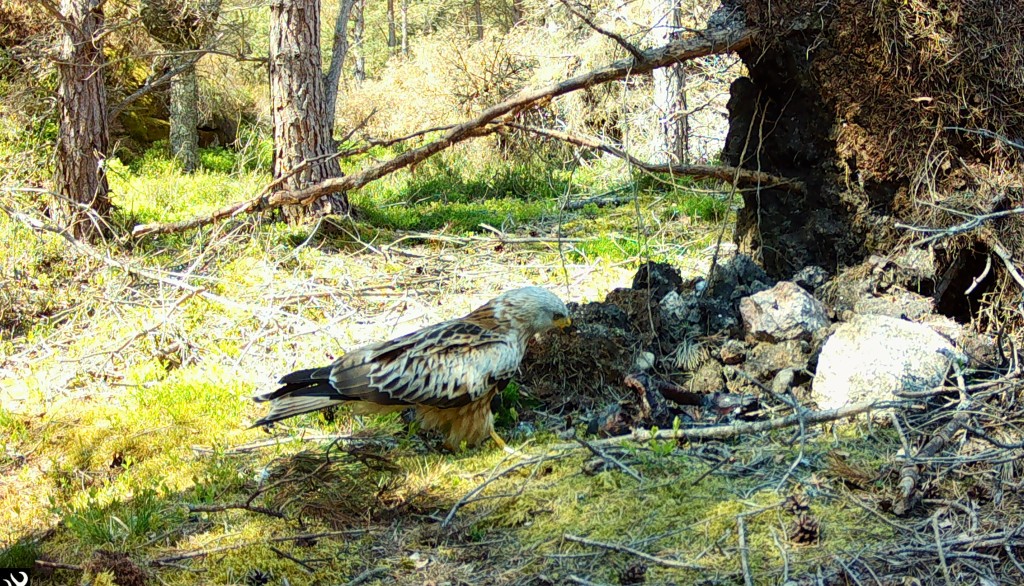Gordon our seasonal reserve officer has been helping to undertake some diversionary feeding for a local remnant Capercaillie population. Here is his story about it below;
This iconic turkey sized grouse bird has been teetering on the edge for some time. There are now thought to be less than 600 of these glorious birds and they need all the help they can get to keep them safe and return them to a thriving species. Capercaillie are ground nesting birds, and their eggs and chicks are very vulnerable and make quite the tasty and nutritious snack for several predators, such as badgers and pine marten. And of course, cute little predators have the right to right to exist too, they’re only doing what comes natural to them.
Therefore, our friends at the University of Aberdeen offered to support us with their diversionary feeding research, work they have been carrying out for some time to help the Speyside birds. This tactic is exactly as it sounds, feeding stations are set up near potential nesting sites where there is also evidence of predators. This feeding sites are meant to offer a much simpler and easier meal than live chicks being guarded by a grumpy capper hen. By finding these sites the badgers and pine martens are “diverted” from the nest sites.
So, every two weeks a person in a car swings by the reserve with deer offal, this offal is kindly provided by our friends at Foresty Land Scotland when they process deer at their larder, this offal would normally be wasted too!
This is where I come in, I strap 20kg of these deer guts to my back and take my bi-weekly hike up the hill. Who doesn’t love a 3-mile hike through trails, over fallen trees and ploughing through bracken as high as my knees? And it doesn’t matter the weather, sideways rain or beating down sunshine these food packages must be delivered. The only living creatures I see are the roe deer that scarper before me (I always wonder if they know what I’m carrying) and the wood ants that make the ground into a living carpet in some sections of the trees.
I must admit when I approach the sites sweat stinging my eyes the leftovers from the last trip assaulting my nose I do wonder if it’s worth it! But, so far, we have managed to capture badger, pine martin, buzzard and red kite taking advantage of the free deer smorgasbord on our tactfully placed cameras.


We are getting a really intimate look at our ecosystems top predators like this majestic Red Kite.

The diversionary feed sites were chosen carefully after predator tracks and signs were discovered.
You may also wonder if it is right to step in and help in this manner? In a natural ecosystem, processes like this would in fact take place. Lynx, wolf and bear would hunt roe deer and I can assure you they take the tasty meat bits leaving the offal behind so all we’re doing is closing that loop that has been broken by these top-predators’ absences.
So, hopefully deer is tastier (and easier) than capercaillie and our efforts give the capercaillie the reprieve she needs to raise her chicks to become the next generation of adult capercaillie.
